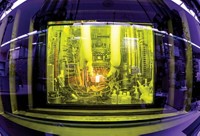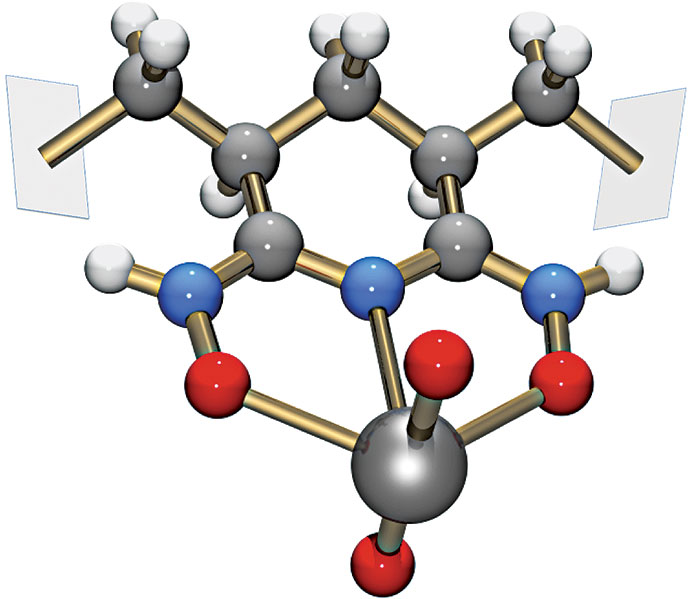Advertisement
Grab your lab coat. Let's get started
Welcome!
Welcome!
Create an account below to get 6 C&EN articles per month, receive newsletters and more - all free.
It seems this is your first time logging in online. Please enter the following information to continue.
As an ACS member you automatically get access to this site. All we need is few more details to create your reading experience.
Not you? Sign in with a different account.
Not you? Sign in with a different account.
ERROR 1
ERROR 1
ERROR 2
ERROR 2
ERROR 2
ERROR 2
ERROR 2
Password and Confirm password must match.
If you have an ACS member number, please enter it here so we can link this account to your membership. (optional)
ERROR 2
ACS values your privacy. By submitting your information, you are gaining access to C&EN and subscribing to our weekly newsletter. We use the information you provide to make your reading experience better, and we will never sell your data to third party members.
Environment
Analyzing Nuclear Processes
ACS Meeting News: Analytical chemists devise ways to watch radioactive streams
by Jyllian Kemsley
September 26, 2011
| A version of this story appeared in
Volume 89, Issue 39

Nuclear chemistry processes, from separating radionuclides to formulating fuels, treating waste, or remediating environmental contamination, all require analytical monitoring just like other industrial activities. But keeping tabs in real time on a complex, radioactive, and fluctuating process stream is not an easy task, especially with the need to minimize the exposure of people and equipment to radiation. At the American Chemical Society national meeting in Denver last month, researchers described different ways of tackling parts of the problem.
The first challenge can be simply figuring out what is in nuclear waste. The waste from weapons production stored at the Hanford Site in Washington state, for example, was mixed together from a variety of historic radionuclide separation processes. “Aged nuclear waste has practically the entire periodic table,” said Jay W. Grate, a Pacific Northwest National Laboratory (PNNL) fellow in the Fundamental & Computational Sciences Directorate, and what’s in each tank can be highly variable.
Job M. Bello, a scientist at EIC Laboratories, located in Norwood, Mass., described developing a Raman telescope that can be mounted above waste tanks to probe liquid in the tanks as well as precipitates left behind when tanks are emptied. By coupling a laser beam with appropriate lenses, Bello and colleagues can identify and quantitate nitrate, nitrite, phosphate, calcium carbonate, and chromate in test samples set 50 feet away. A video camera coupled into the system also allows the scientists a visual window to what they’re sampling.
For liquids, the telescope is not as sensitive as a probe inserted directly into the fluid, Bello noted, but it provides some idea of the chemistry in a tank and how it might be evolving over time. For solids precipitated out onto the walls or bottom of the tank, the telescope will provide necessary information for operators who need to figure out how to dissolve it. The telescope was developed in collaboration with researchers at PNNL and Savannah River National Laboratory.
Cleanup of the heavily contaminated Hanford Site also involves treating groundwater to remove radioactive elements and chemicals such as carbon tetrachloride. PNNL scientists have collaborated with Burge Environmental of Tempe, Ariz., to develop remote sensing systems to measure radionuclides such as strontium-90, technetium-99, and uranium in groundwater. The technology may also be used in a treatment plant to monitor how much technetium is in water extracted from the ground, how well purification columns are working, and how the contaminated plume changes as cleaned water is injected back into the aquifer, said Matthew J. O’Hara, a research scientist in PNNL’s Radiochemical Science & Engineering Group.
The technetium system draws in water, adjusts the pH, and then injects the prepared sample into a radiochemical sensor composed of a weak anion-exchange resin mixed with scintillating media. The technetium equilibrates with the anion-exchange resin and, while it’s there, undergoes beta emission. If the beta particles hit the scintillating material, the material releases photons that are detected by photomultiplier tubes. The ability to monitor water purification in real time will be critical for operating the plant, which will treat 2,500 gal of water per minute, O’Hara said.
In-process monitoring is also necessary for spent-fuel processing to extract plutonium and uranium for reuse. Samuel A. Bryan, also a researcher in PNNL’s Radiochemical Science & Engineering Group, described using Raman spectroscopy combined with visible and near-infrared spectroscopy to monitor liquid-liquid extraction in a centrifuge. Bryan and colleagues used Raman spectroscopy to monitor uranyl (UO22+) and nitrate ions and visible/near-IR spectroscopy to observe plutonium and neptunium complexes.
The key difference between Bryan’s system and standard spectroscopic equipment is that the probe can be inserted into a centrifuge as far as 300 feet away from the spectrometer, connected by fiber-optic cables. The distance protects both the instrument and personnel from radiation exposure. It can also mean some loss of spectroscopic signals, but that is mitigated by using a high-power light source or longer signal-averaging time, Bryan said. In separation tests of actual spent nuclear fuel, the in-process spectral analysis matched very well with results from inductively coupled plasma mass spectrometry on isolated samples (Radiochim. Acta, DOI: 10.1524/ract.2011.1865).
Development of these and other process analytical tools is essential in the nuclear industry because of its unique needs, said Robert Lascola, an analytical chemist at Savannah River National Laboratory and one of the organizers of the Division of Nuclear Chemistry & Technology session on sensors for harsh and radiological environments at the meeting. Processors need to keep people away from radioactive or otherwise hazardous materials, instruments need to withstand radiation, and elements such as uranium and plutonium must be closely tracked. And all of that has to happen while meeting a demand shared by any other industrial process: rapid turnaround of accurate information to permit better and faster processing decisions. ◾




Join the conversation
Contact the reporter
Submit a Letter to the Editor for publication
Engage with us on Twitter